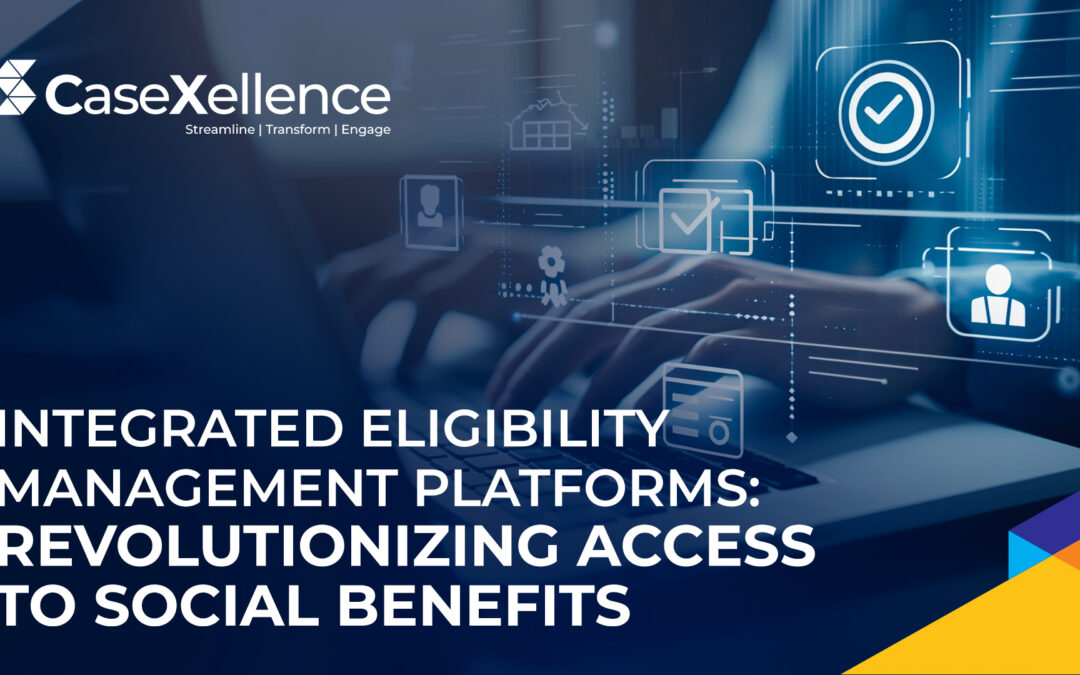In today’s rapidly evolving digital landscape, the need for seamless access to social benefits has never been greater. This is where Integrated Eligibility Management Platforms (IEMPs) come into play, serving as the backbone of state-level Medicaid and human services programs. These platforms are not just technological marvels; they represent a paradigm shift in how governments provide essential services to the public.
Table of Contents
What is an Integrated Eligibility Management Platform?
An Integrated Eligibility Management Platform is a comprehensive system designed to manage the eligibility determination, enrollment, and maintenance processes for various government assistance programs. These platforms use advanced automation and integration techniques to facilitate a more efficient, transparent, and user-friendly approach to benefits administration. The goal is to provide a single, streamlined process that ensures individuals and families receive the support they need with minimal delay or bureaucracy.
Core Features of Integrated Eligibility Management
The core components of an IEMP can be categorized into several key areas:
- Case Management Worker Portal: This portal is tailored for eligibility workers, streamlining processes like intake, case management, verification, and benefits issuance. It’s the workhorse of the system, where the bulk of administrative tasks are carried out efficiently.
- Customer Self-Service Portal: A responsive and secure interface allows clients to apply for benefits, renew their applications, and report changes in their circumstances. This not only empowers clients but also reduces the workload on staff by shifting some responsibilities to the end-users.
- Integration Framework: At the heart of an IEMP is the ability to update and integrate third-party products seamlessly. This flexibility is crucial for reducing maintenance costs and ensuring the system remains relevant over time.
- Robust Financial Management: An IEMP features sophisticated financial management tools, including automated over- and under-payment determinations, which are vital for the accurate disbursement of benefits.
- Data Integration Across Programs: An effective IEMP offers comprehensive data integration that allows for better decision-making and accountability across various programs and agencies.
- Automated Workflows: Efficiency is key in eligibility management, and automated workflows ensure that agencies can deliver better outcomes promptly.
- Modernization Capabilities: With support for both on-premise and cloud-based deployments, IEMPs are designed to be scalable and adaptable to changing legislative, policy, and population needs.
CaseXellence: A Closer Look
Integrated Eligibility Management Platforms (IEMPs) like CaseXellence represent a new era in social services delivery. These systems are not just about implementing technology for the sake of modernization; they are about transforming the way citizens access and manage their benefits, improving both the efficiency and the quality of service delivery.
CaseXellence is a prime example of an IEMP that streamlines the management of government assistance programs. The low-code no code innovative and easy to use platform is engineered to support the multifaceted nature of eligibility determination, enrollment, and ongoing case management for a variety of benefits, including Medicaid, food assistance programs, and temporary aid.
The Impact of CaseXellence
Platforms like CaseXellence bring a multitude of advantages to the table. Here are some of the transformative impacts these systems have:
- Efficiency in Administration: By automating routine tasks and simplifying complex processes, CaseXellence reduces administrative overhead, speeds up service delivery, and minimizes errors.
- User-Centric Design: With a focus on the end-user, whether it’s the benefits recipient or the case worker, CaseXellence offers an intuitive interface that makes navigating the complexities of eligibility and benefits management more accessible.
- Data-Driven Decision Making: The integration of data analytics into CaseXellence allows for real-time reporting and better decision-making, ensuring that resources are allocated efficiently and effectively.
- Flexibility and Scalability: As policies and programs evolve, CaseXellence’s modular design allows for quick adaptation, ensuring that the system grows with the changing needs of the population and legislation.
- Improved Access to Services: With features like a self-service portal, CaseXellence empowers individuals to manage their benefits proactively, leading to greater engagement and satisfaction.
- Cost Savings: By reducing the need for manual processing and enabling more accurate eligibility determinations, CaseXellence can lead to significant cost savings for government agencies.
CaseXellence empowers agencies to do more with less, streamlining operations and enabling workers to focus on the human aspect of social services—the beneficiaries. For the individuals and families who rely on these programs, CaseXellence provides a lifeline, ensuring that assistance is just a few clicks away.
Conclusion:
The future of social services is integrated, and platforms like CaseXellence are leading the charge. It’s a call to action for agencies to embrace these innovative solutions, to not only meet the current demands but to pave the way for a more inclusive and responsive social safety net. As these platforms continue to evolve, they will undoubtedly play an instrumental role in shaping a world where government assistance is not just a service but a seamless and empowering experience for all.
Related CaseXellence Blogs:
- The Transformative Power of CaseXellence’s Health CX Module in Modern Healthcare
- What are the Essential Features for Selecting a Legal Case Management Software?
- The Impact of Force Multipliers on Judicial Efficiency: A Path to Excellence in Case Management
- Key Benefits Of Adopting A Case Management System




